Official UK partner to the Paradors, Pousadas, Pestana Hotels & Resorts, Les Collectionneurs (Chateaux), and European Hotels Collection. Keytours International, formerly Keytel International, your agent in the UK.
World Heritage Cities
Spain has the 3rd largest number of World Heritage Sites in the world (after Italy and China) and 15 Spanish cities have received UNESCO World Heritage City status. Here is a brief introduction to these selected cities and their principal attractions.
You can’t ask for 15 better excuses to explore real Spain.
Alcalá de Henares
A short distance from Madrid, this town is famous as the birthplace of Spain’s most treasured literary figure and author of Don Quixote, Miguel de Cervantes. With these literary roots, it is no surprise that Alcalá was Spain’s first university city and remains one of the country’s most important educational centres. In fact, much of the city was developed around the university and it now hosts the prestigious Cervantes award ceremony each April which honours Spanish-language authors.

Places of interest:
- Casa de Cervantes Museum
- University (particularly the Paraninfo lecture hall with its Mudéjar coffered ceiling)
- Plaza de los Santos Niños
- Cathedral
- Plaza de Cervantes
- Roman ruins
Avila
This medieval town is one of Castile and Leon’s historical and religious treasures. The castellated walls that surround the city date back to the Moorish rule and are truly a marvel. One of the most famous figures associated with the town is Saint Teresa de Jesus, also known as Teresa of Avila, a Carmelite nun celebrated for her dedication to her religion and pilgrimages across Spain.

Places of interest:
- Castellated Wall
- Los Dávila Palace
- Saint Thomas Muesum and Oriental Museum
- Los Guzamanes Tower
- Avila’s Cathedral
- Saint Teresa Convent
- La Incarnación Monastery
Baeza
Situated in northern Andalusia, this lovely town has been a World Heritage City since 2003. Like many Spanish cities in this region, Baeza displays traces of the Roman and Moorish communities that have occupied this town, however visitors will note that much of the architecture stems from the 16th century Spanish Renaissance period, when the town’s university was formed.
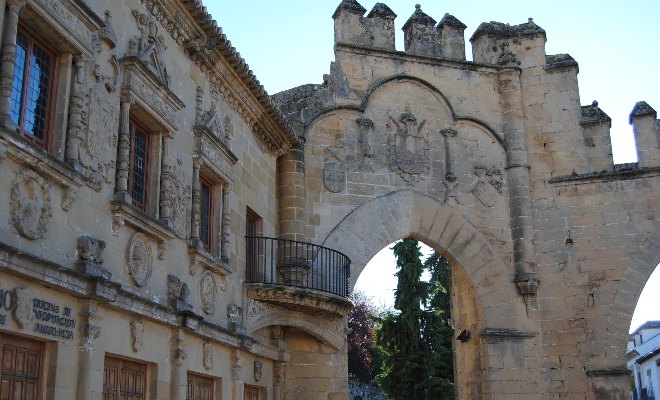
Places/festivals of interest:
- Palacio de Jabalquinto
- Antonio Machado International Poetry Contest
- Easter Week – declared a National Tourist Interest
Cáceres
Spain’s first world heritage city (and the third in the world), this charming town is a testament to its medieval roots. The city’s main focus is the Plaza Mayor, first built in 1229, which has hosted fairs, jousting tournaments, processions, and religious festivals and continues to be used for city-wide celebrations.
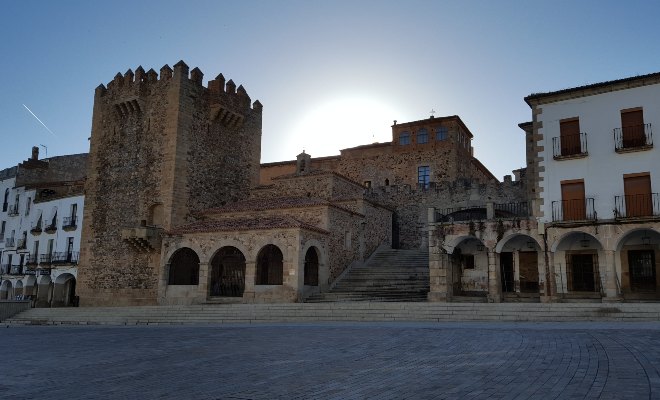
Places of interest:
- Old Town
- Bujaco and Los Púlpitos towers
- Jewish Quarter
- 3 Cultures Medieval Market
- Virgen de la Montana Sanctuary
- Open-air Sculpture Exhibition in El Príncipe Park
Córdoba
One of Andalusia’s largest cities, Córdoba’s boasts an impressive 2,000 year history which is reflected in the mixture of Roman, Jewish, Arabic, and Christian architecture on view in every corner of the city. Cordoba’s most treasured monument is the grand Cathedral-Mosque which has evolved from a simple basilica, to a grand Mosque and eventually a Cathedral.
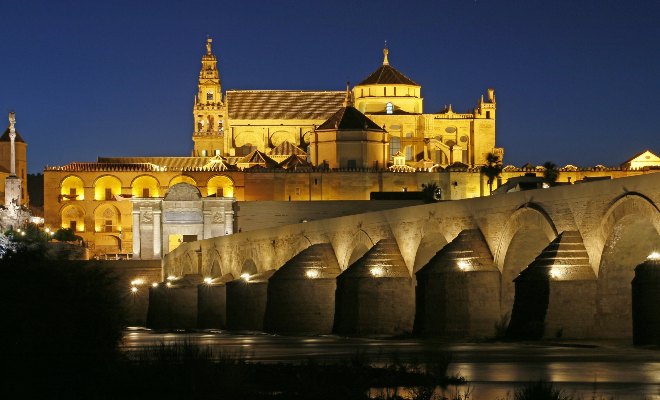
Places of interest:
- Mosque-Cathedral of Cordoba
- Jewish Quarter
- Alcázar of the Christian Kings
- Medina Azahara palace ruins
- Episcopal Palace
- Hospital of San Sebastian
- Guadalquivir river bridges
Cuenca
Cuenca is truly a unique town, blending nature and historic architecture, creating a picturesque retreat. The town’s hanging houses are its pride and joy, and the impressive iron wrought San Pablo bridge connects the city’s former convent (which now houses the Parador) offering the best views of the houses. The historic city streets offer both fantastic architecture and great viewpoints over the valley.
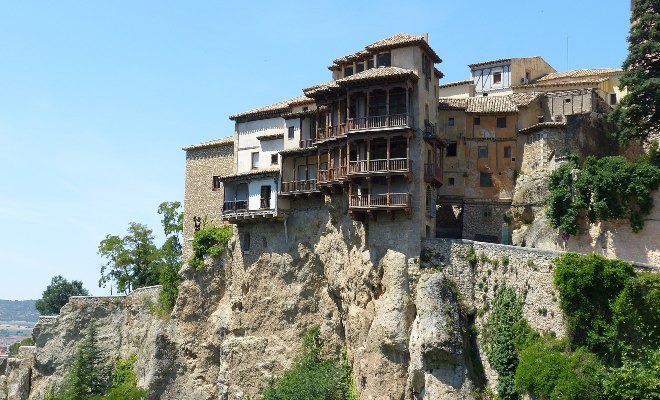
Places of interest:
- Casas Colgadas (Hanging Houses)
- San Pablo Bridge
- Mangana Tower
- Episcopal Palace
- Gothic Cathedral
- Spanish Abstract Art Museum
- Gorges of the Júcar and Huécar Rivers
Ibiza Town
Ibiza town’s impressive stone city walls ensure that this imposing fortress stands out against the beautiful natural surroundings. The lovely whitewashed houses and churches add an air of authenticity to this lively Spanish town.
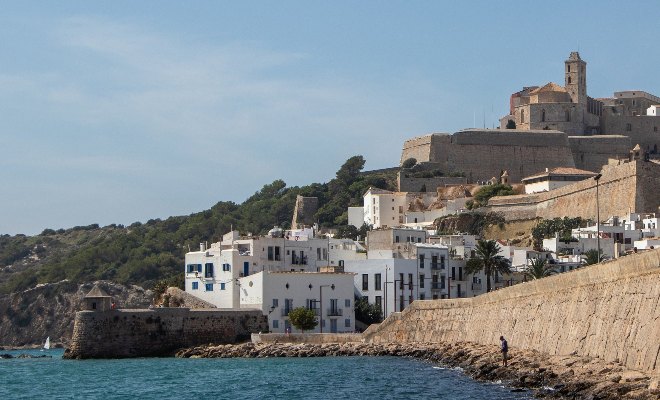
Places of interest:
- Dalt Vila Renaissance fortress
- Aiboshim city
- La Marina and Sa Penya historic quarters
- Necrópolis de Puig des Molins
- Archaelogical Museum
- Ses Selines Nature Reserve
Mérida
This Roman town features some of the best preserved examples of Roman architecture in Spain. The roman amphitheatre and bridge remain in excellent condition, and the small but charming town has continued to play an important role in the development of religious and architectural innovations.

Places of interest:
- Roman amphitheatre
- Roman theatre
- Los Milagros Roman Aqueduct
- National Museum of Roman Art
- Roman bridge
Salamanca
Spain’s most famous university city is also home to some important historical buildings. Salamanca’s Plaza Mayor is one of city’s most important sites and its arches are adorned with tributes to some of Spain’s greatest conquerors, thinkers, and soldiers such as Cervantes, Pizarro, and Hernán Cortés. The city’s most important developments occurred during the 15th and 16th centuries and much of its architecture dates back to this period.

Places of interest:
- University
- Plaza Mayor
- Romanesque La Vieja (Old Cathedral)
- Romanesque La Nueva (New Cathedral)
- Casa de las Conchas and Casa de la Muertes
- Las Claras and Las Dueñas Convents
San Cristóbal de la Laguna
In northern Tenerife, La Laguna was once considered the most important town in the Canary Islands with over 500 years of history. With over 600 Mudéjar-style buildings around the town, it is a fantastic example of how the discoverers implemented their own architecture and culture on the New World.

Places of interest:
- Church of La Concepción
- Bajamar natural pools
- Corpus Christi celebrations
- Church of San Agustín
- Casa Salazar
- Casa Montañés Convent
- Palace of Lercaro
Santiago de Compostela
Perhaps Spain’s most important and famous religious site, Santiago de Compostela is commonly known as the final stop for pilgrims completing the Camino de Santiago. The city’s cathedral overlooks the main square which is an important site for those completing the Camino, and the cathedral is rumoured to house the remains of St James himself.
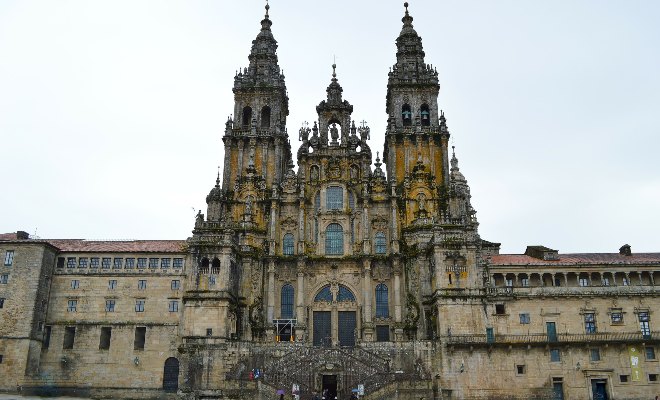
Places of interest:
- Santiago’s Cathedral – Particularly the roofs
- Praza do Obradoiro
- Swinging of the Botifumeiro
- Praza da Abastos marketplace
- Hostal Dos Reis Católicos – the city’s Parador and a former Pilgrim’s hospital
- Ancestral homes on Rua do Vilar and Rua Nova
- San Martiño Pinario Monastery
Segovia
Just 30 minutes away from Madrid, this lovely town is home to one of Spain’s most well-known UNESCO World Heritage Sites, its impressive roman aqueduct which dates back to the 1st century and runs through the heart of the town. The town also boasts two other important World Heritage sites, the Alcázar and the Cathedral. Along with its impressive historical architecture, the town is also famed for its delicious suckling pig.
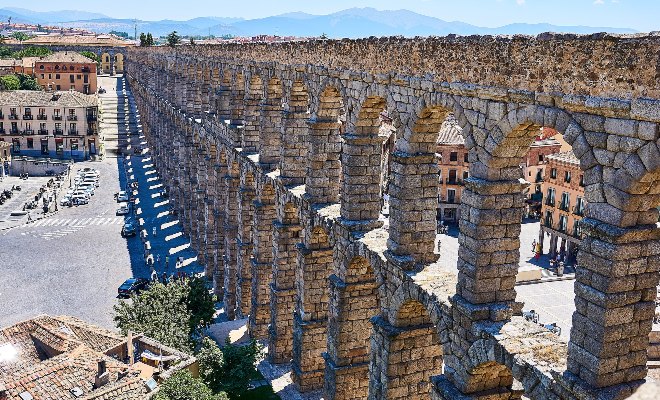
Places of interest:
- Roman Aqueduct
- Alcázar
- Cathedral
- Jewish Quarter
- San Antonio El Real monastery
- Romanesque churches of San Millán and Vera Cruz
- Plaza de San Martín and Plaza Mayor
Tarragona
Tarragona is an important Roman city which was declared the key operations centre for the Roman legions in 218 B.C. and was behind the construction of Spain’s first Roman wall. This heritage is a source of pride for the city and as such has shaped much of its development with many Roman influences spotted throughout the city.
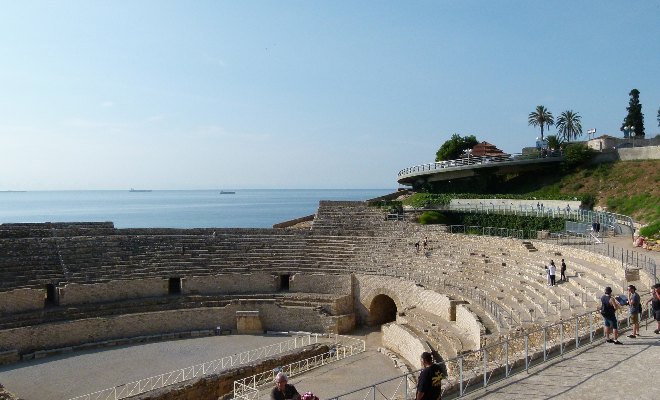
Places of interest:
- Roman Aqueduct
- Cathedral of Santa María
- Casa de Canals
- Roman amphitheatre
- El Serrallo district and city port
- El Mèdol Roman Quarry
- Los Escipiones Tower
Toledo
This stunning city is one of Spain’s richest sources of culture and history and has held World Heritage status since 1986. Like many cities, Toledo has been occupied by Moorish, Jewish and Christian communities, each leaving its cultural and artistic impact, and therefore gaining its nickname, the ‘city of three cultures’. The town was famously the chosen home of artist El Greco with many tributes to the renaissance artist found throughout the city.

Places of interest:
- El Greco’s House
- Bisagra Gate
- Tavera Hospital
- San Román church & church of Santo Tomé
- Cathedral
- Alcázar
- Old main synagogue
Ubeda
Founded by the Arabs on prehistoric and Roman settlements, this small Andalusian town, sometimes referred to as ‘the Moorish Queen’, flourished during the Renaissance period. Today the town is home to 48 monuments and 9 buildings that have been declared National Monuments by the Spanish government due to their cultural and historical value.
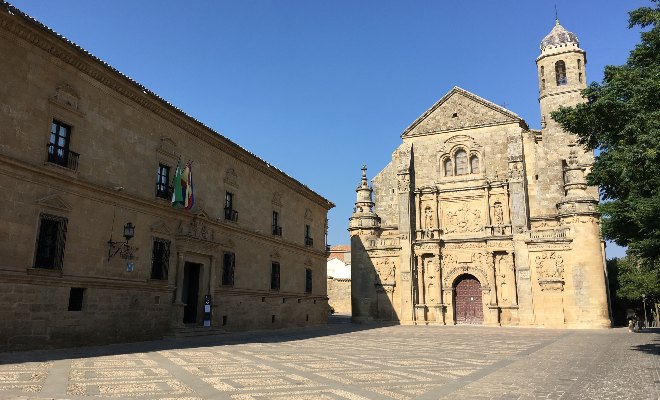
Places of interest:
- Sacred chapel of El Salvador
- Plaza 1o de Mayo Square
- Hospital de Santiago
- Palacio del Deán Ortega Palace
